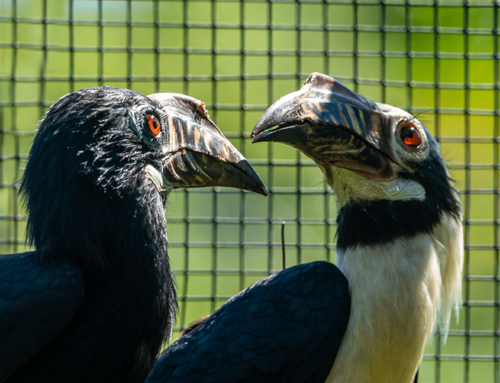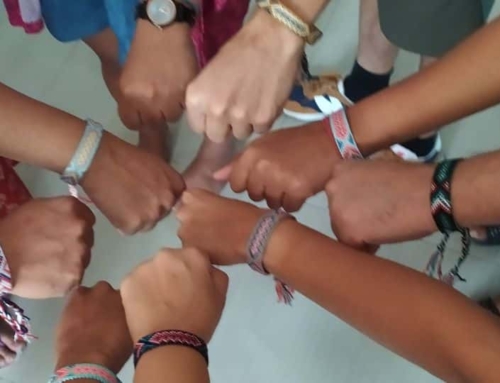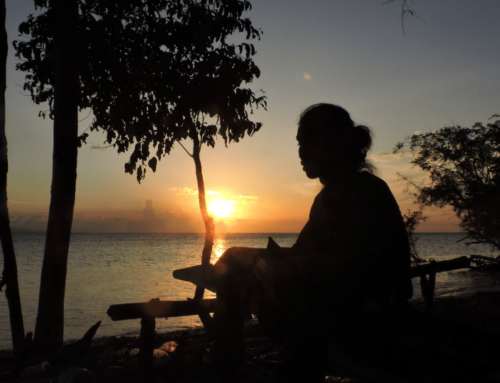An Interview with Dr Amanda Vincent, winner of the Indianapolis Prize, 2020
Dr Amanda Vincent has been a driving force for ocean conservation for more than three decades, anchored in her speciality of seahorses. She was the first person to study these extraordinary animals underwater and in 1996 she co-founded Project Seahorse, a conservation organisation that works to save seahorses by finding solutions for coastal marine ecosystems. This year Amanda – who still directs Project Seahorse – won the world’s most prestigious award in animal conservation, the Indianapolis Prize, becoming the first person to win the award for ocean conservation.
Congratulations on becoming the first conservationist focusing on life in the ocean to win the world’s most prestigious environmental prize! What does this prize mean to you and the Project Seahorse team?
It’s huge on many levels. As the top prize in the world for animal conservation, it’s enormously valuable as a seal of approval. People have to sit up and take notice if we’ve got the Indianapolis Prize in our pocket, so that gives us a platform to talk about critical issues. And then of course it brings the funding, which comes to me personally. I have to decide what to do with it, which is a nice challenge!
But more than that it brings a sense of pride and validation for what we are doing. We’re a tiny band of people – no more than six professional people at any given moment – supplemented by lots of students, volunteers, partners and collaborators, but we’ve always punched far above our weight in terms of funding and capacity. I also want to pay special tribute to Heather Koldewey, who co-founded Project Seahorse, and to Sarah Foster, who joined us 20 years ago. These two inspirational friends have made all the difference to our success and my enjoyment.
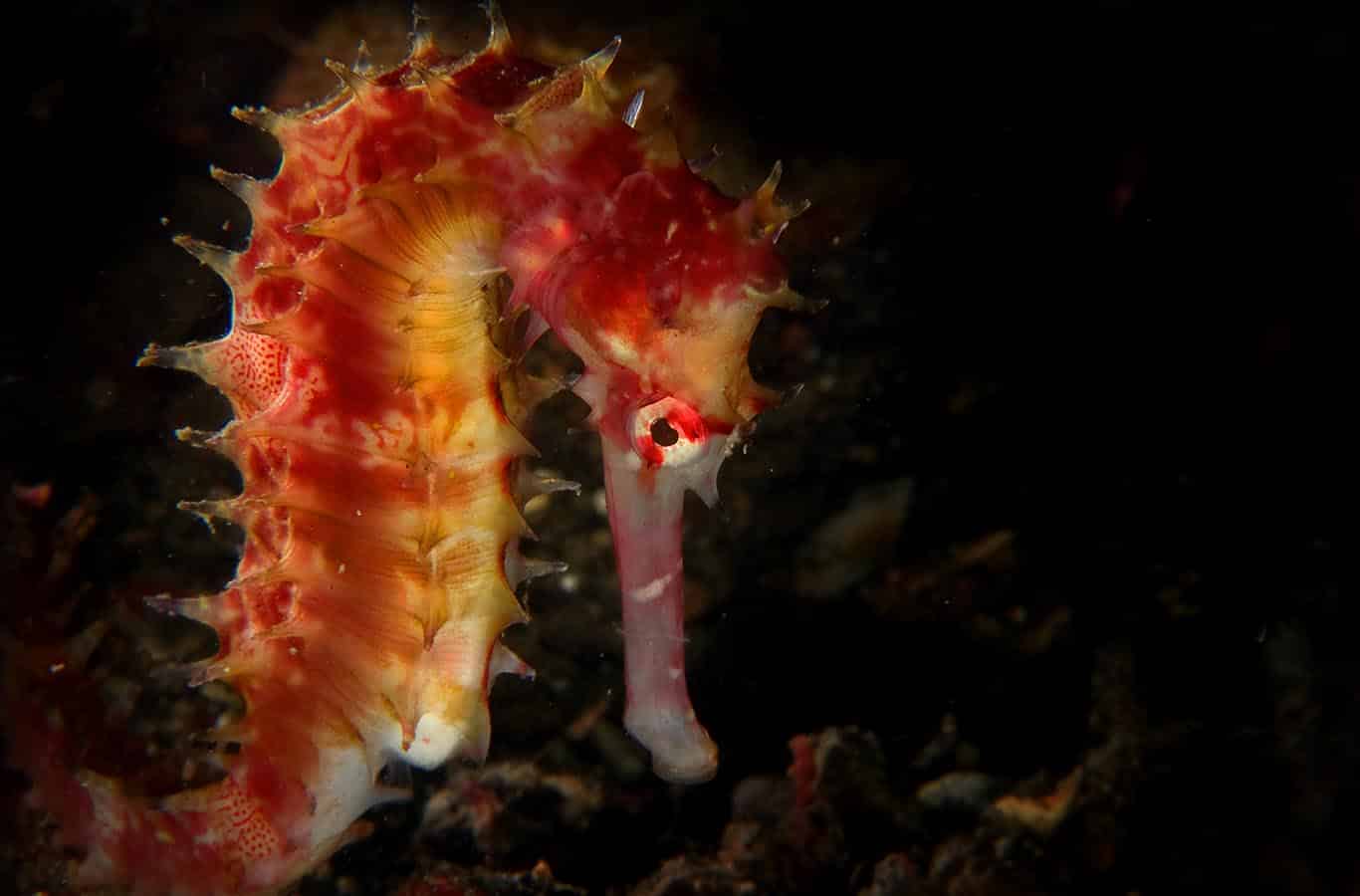
Thorny Seahorse (Hippocampus histrix). Image © Project Seahorse
Seahorses are iconic, extraordinary creatures, yet what lies beneath the surface of the waves often seems to be ignored when people talk about wildlife. Why do you think that is?
Try a little experiment: close your eyes and think about the ocean. Chances are you’ll think about waves lapping on a shore, but that’s just like thinking of the wind whistling through the very tops of the trees in the rainforest. Trying to convey to people that we have canyons and forests and jungles and prairies and plateaus and all their abundant marine life underwater is very hard if people just think of the ocean as a bowl with a sloppy top!
When you’re talking about ocean wildlife conservation, people’s thoughts might extend as far as whales and the dolphins, occasionally marine turtles, but you very seldom get much beyond that. One of our greatest challenges has been to convince people that marine fishes and invertebrates are wildlife too.
Not enough people have a sense of connection with the ocean, so it’s extraordinarily difficult for the majority to identify with the life within, which is where the seahorses come in. Seahorses are incredibly attractive, alluring and iconic animals: people engage with them and they can help us tell really quite complicated stories. I’ve never started talking about seahorses and had someone turn away with a bored look in their eyes. For many people, seahorses are quasi-mythical – they’re in the same camp as unicorns! The mere fact that they exist astonishes people. When people learn that I studied seahorses and know a lot about them, I instantly have a captive audience, from the two year-old child to the village elder.
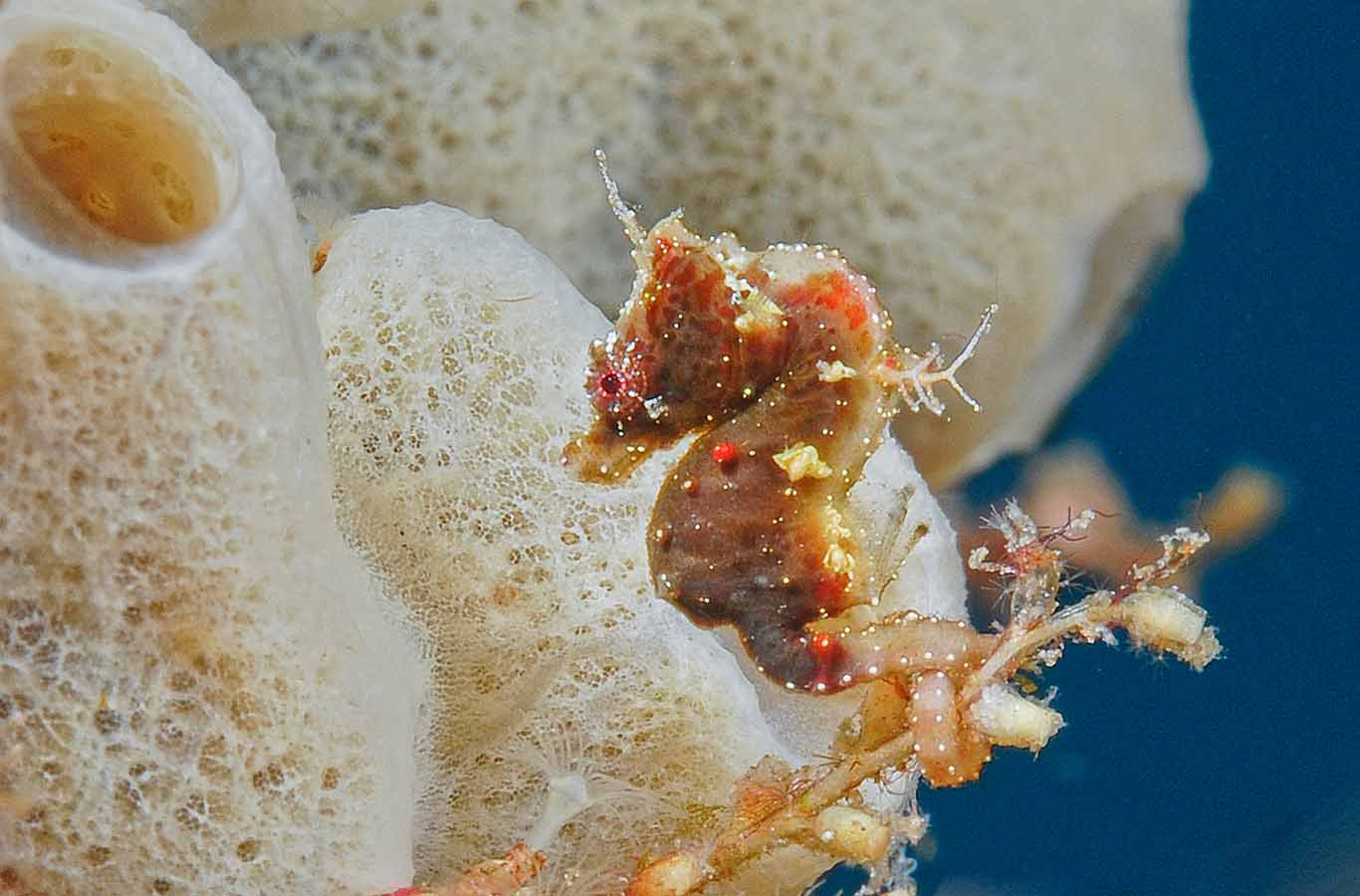
Pontoh’s Seahorse (Hippocampus pontohi). Image © Patrick Decaluwe, Guylian
What are some of the stories that seahorses can help you tell?
Seahorses capture most of the threats in the marine environment, as well as many of the solutions. They are subject to heavy fishing pressure from small-scale subsistence fishers, but also to enormous, astonishingly bad fishing pressure – from bottom trawling, seine nets and gill nets and other non-selective forms of fishing. They’re disturbed by degradation of their coastal habitats: seagrasses, mangroves, coral reefs, estuaries, macro-algae/seaweed. And they are also very vulnerable to climate change as these habitats are damaged.
At Project Seahorse, we look at the world as a bit of an onion – think of the concentric rings in a cross section of an onion. We put seahorses at the centre of our world and then of course, to protect seahorses, you have to look after their habitats, their ecosystems, their communities. For those to flourish, you’ve got to work on managing human pressures: fishing, dredging, dumping, mining, coastal development. We work with subsistence fishers, for example, developing regulations, putting in place alliances of small-scale fishers to help them find a voice.
But we also know that the fishers, the miners, the dredgers, the dumpers will only make good decisions if they and their families are well supported. You have to support the economic wellbeing of the community.
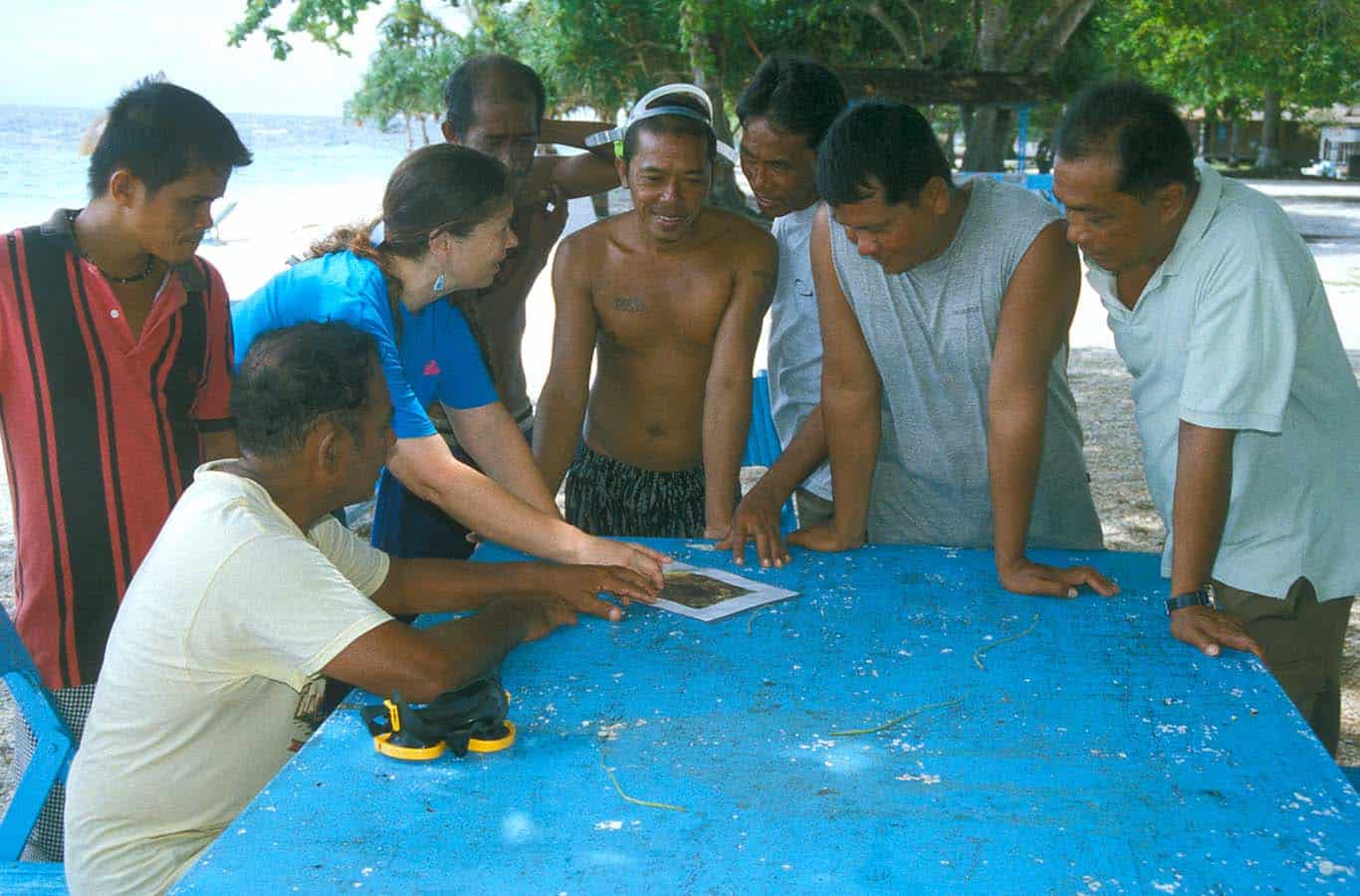
Amanda Vincent and fishers in Balicasag, the Philippines. Image © Amanda Vincent, Project Seahorse
In today’s world you have to look at the global context, so we work at the UN and IUCN levels a lot: we catalysed the first global export regulations for marine fishes, for example, under a UN Convention called CITES. Perhaps the outermost layer of this onion is the human behaviour that drives all this, the social context of greed or altruism, self-discipline or self-indulgence.
What is encouraging is that seahorses respond really well to solutions so, whether it’s putting in place measures such as protected areas, size limits for fisheries or export regulations, actions that are beneficial for the seahorses actually support so much more. And because seahorses are so funky, more people will listen!
What are the most severe threats to seahorses and their environments?
Well, bottom trawling is an obvious one. Bottom trawling is to the ocean what clear cutting is to forests. It is an astonishingly damaging and wasteful practice that just doesn’t discriminate. It’s not even profitable! Bottom trawling is commonly a money-losing proposition – but bottom trawl fisheries are kept alive by government assistance in the form of fuel subsidies. To make it worse, in many countries – Thailand for example – the crew are very often enslaved – literally enslaved – although you also often get indentured labour and forced labour. Taxpayers’ money is paying for bottom trawling to destroy the ocean! I think most people would be shocked to discover the scale of these subsidies and the damage that they are doing, both in ecological and in human rights terms.
At Project Seahorse, we have something we call the ‘seahorse index of trawl pressure’. Where there are seahorses in the world, which there are in many trawled areas, most trawl boats only bring up one or two seahorses per vessel per night. Now this might not sound like a lot, but in fact, when you look at the number of vessels operating, this all adds up to tens of millions of seahorses caught every year in bottom trawl fishing. Vietnam alone was exporting at least 5 million seahorses every year!
With COVID-19, there is renewed discussion about wildlife trade, both legal and illegal. Where do seahorses fit into that discussion?
I’ve been talking to colleagues recently about what they mean when they call for an end to wildlife trade. Mostly, what they want is an end to IUU (Illegal Unregulated and Unreported) trade. They believe that wildlife trade should be rationalised into approaches that are ecologically safe and economically safe, but which are also safe for human health. I think the hashtag #endwildlifetrade is unfortunate, because that’s not actually what most people are calling for. As humans, we are hugely dependent on wildlife, including marine fishes. I am certainly in favour of ending IUU wildlife trade, and I understand wanting to take advantage of the moment to push the point on the damage this trade does, but I don’t support ending all wildlife trade.
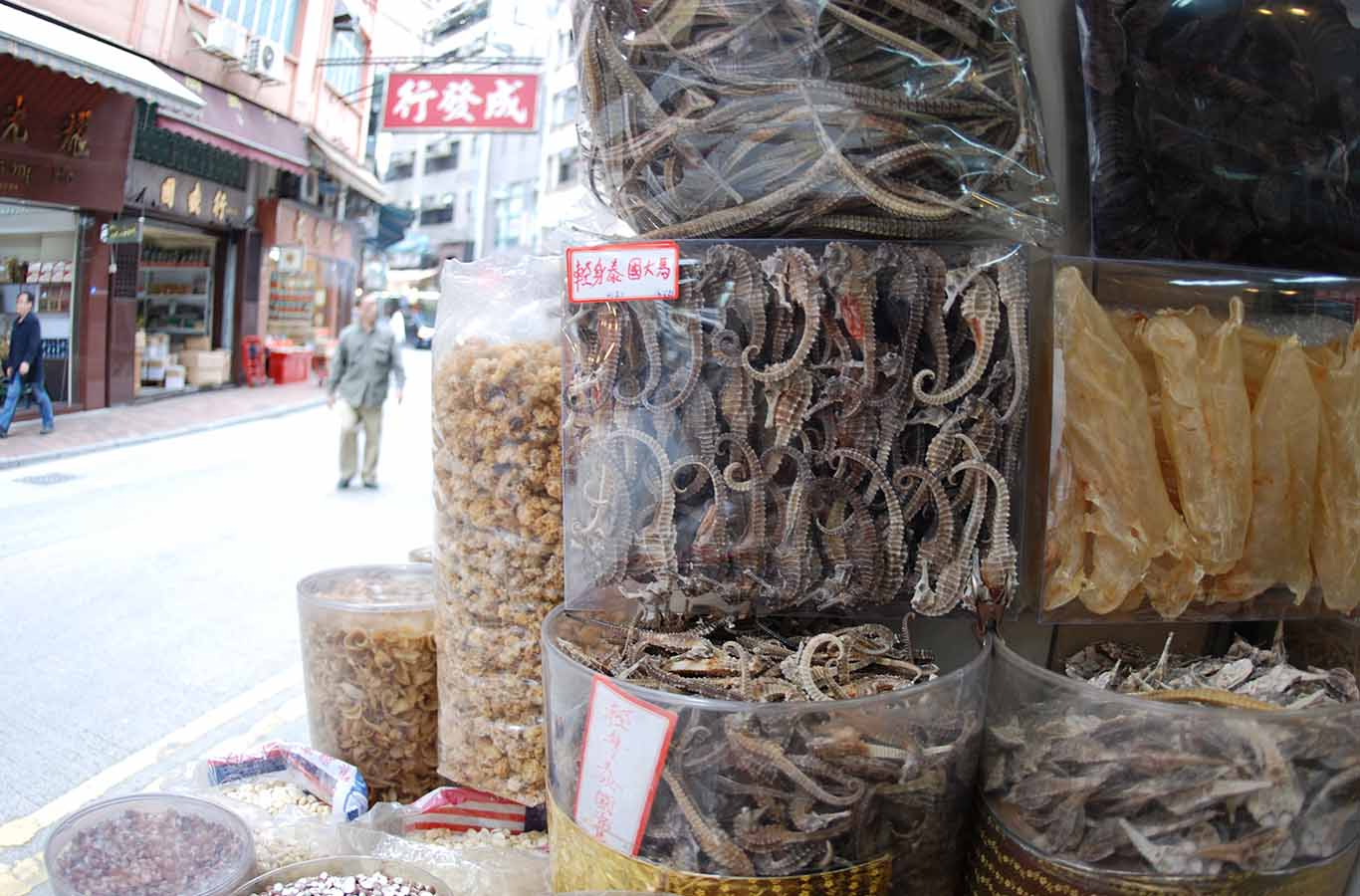
Dried seahorses for sale in Hong Kong. Image © Tyler Stiem, Project Seahorse
Many of the rules and regulations that exist to regulate wildlife trade are not too bad, but there is a desperate need for much tighter and more effective implementation. For example, many countries decided to ban the export of seahorses, even though CITES does not in any way decree such bans. This has led to around 96% of what would have been the seahorse trade now being rendered illegal. So the ‘visible’ trade in seahorses is tiny. However, during work we’ve recently undertaken in Hong Kong – where we’ve developed some very good relationships with the traditional Chinese medicine community – we were granted access to warehouses and staff. We realised that about 95% of the imports to Hong Kong are actually illegal. Almost the entire trade has simply gone underground, which is what you would expect if you just ban the trade altogether.
What challenges does COVID-19 bring for the conservation sector, and for your work?
Well, the world as we emerge from this pandemic is going to be a very different world in many ways. 2020 was meant to be a bumper year for biodiversity and nature conservation, in terms of ‘talkfests’, and now I’m wondering if COVID might be a catalyst for something more.
I think there’s a feeling that the world has to emerge from this catastrophic and catalytic experience changed in some way: that’s just common sense.
The fisheries side of the COVID story has not been told, but it’s actually very powerful. There were thousands of people stranded on fishing vessels initially. Other people have lost their entire livelihoods because trade routes and market demands have dried up. Yet more people can’t land their catch because of a dearth of shore-based workers and supplies. And how do you socially distance on a small fishing boat?
There are huge human costs associated with COVID-19, so the concern is that to try to mitigate these costs we just fall back into the previous, damaging business-as-usual way of doing things. But in fact this is a wonderful opportunity to rationalise the economy and to curtail activities such as bottom trawl fisheries, because these fisheries are money-losing propositions almost everywhere.
One striking proposal is to convert government money generally used to pay for fuel subsidies – that keeps unprofitable boats fishing – into direct grants to the fishers.
From the work we’ve been doing in Asia with government officials, fishers’ cooperatives, research institutes and NGOs, one thing that is worth highlighting is that almost everyone agrees that bottom-trawling has to stop. The most common justification for not stopping it is that people’s livelihoods depend on it. Yet for the most part the crew on trawl boats have no fishing history or coastal connections at all. They’re labourers pure and simple. They might have come from the hinterland or from urban environments, but they have no particular affinity for fishing. Add to that the often terrible conditions in which they work, and the whole industry becomes harder to justify. The problem is that most people have this romantic view of fishing, this idea that fishers are somehow a breed unto themselves. We have to get away from this idea and realise that most crew on most trawl fishing boats are not fishers. I don’t think most people would have the same romantic, nostalgic view about letting a factory fail if it was enslaving people and ruining the environment.
Do you think there are opportunities for something good to come out of this pandemic?
On a global scale, I think – and hope – that we’ll consider our relationship with the natural world much more. One thing I found interesting was the global reach we got when we did the Indianapolis Prize announcement. In the first 3 days, the story reached 2.2 billion people – just think about that for a moment. This is for a story about animal conservation in the middle of one of the worst pandemics we’ve ever seen! I think people are tired of doom and gloom, tired of disaster and destruction and want to hear stories that offer hope and potential. Our story of seahorses was outside their normal day to day grind. It took them off to other worlds.
I want conservation to find its most optimistic voice, its most hopeful marshalling of opportunity. We should be emphasising what we can achieve and how effective we can be as a global community.
I’m a little uncomfortable with wildlife trade as the main mantra, because it’s a very negative message. We have an opportunity here to light a fire of optimism and hope, and we do have a lot to be optimistic about with the ocean: we’ve got around 10 per cent of the ocean protected now in 2020, and our goal is 30 per cent by 2030. I genuinely think that’s achievable; I think the end of bottom-trawling is achievable and believe that an agreement on protecting biodiversity in areas outside national jurisdictions is possible.
The amazing thing is, if you stop bottom-trawling – if you just stop ‘dragging them nets’ – ocean life recovers! If you put a protected area in place, ocean life recovers. If you stop doing the stupid things, ocean life recovers.
Talking of hope and optimism, a new species of pygmy seahorse – roughly the size of a grain of rice – was recently discovered in Sodwana Bay, South Africa. How much does this unexpected discovery give you hope for the future conservation of these extraordinary animals?
Well, it just demonstrates how much there is still to discover. The new species is called Hippocampus nalu, (named after Savannah Nalu Olivier, who first discovered it) Richard Smith, a friend and co-author on the paper describing this discovery, gave the most brilliant analogy about it. He said that finding Hippocampus nalu in Sodwana Bay was like finding a kangaroo in Scotland!
I think we’re going to be finding pygmy seahorses through much of the Indian Ocean. We started with only one pygmy species and now I think we’re up to six. Colleagues found a new one in Japan recently too (Hippocampus japapigu), so my guess is they’re going to reach from Korea down to South Africa which is a long, long way. These seahorses are incredible ’spokes-species’ for their habitats.
There are so many mysteries in the ocean that are yet to be unlocked. I’ve never met anybody who hasn’t gone gooey when they see one of these pygmy seahorses, so why are we allowing their gorgonian coral homes to be destroyed?!
Synchronicity Earth has supported Amanda and Project Seahorse since 2013.
“Working with Synch Earth feels like working with family. It feels like I’m working with colleagues who understand, appreciate and are right with me in thinking creatively about how to go forward with issues. And working with Synch Earth makes me feel like I’m working with problem solvers, and that’s super important to me.”



